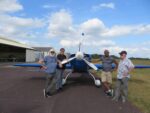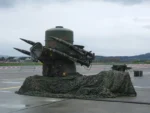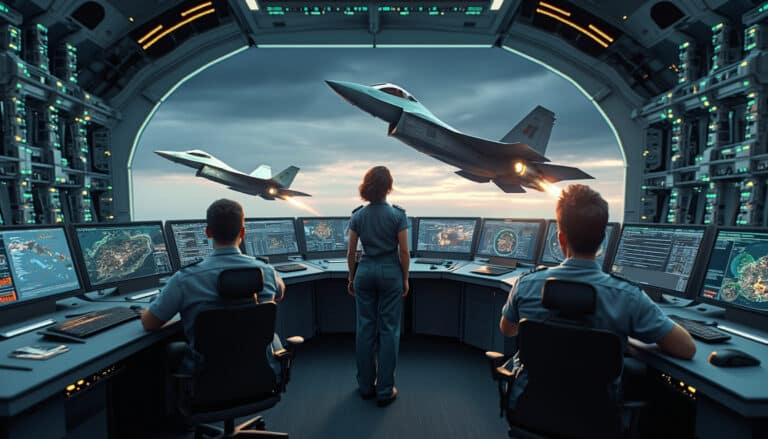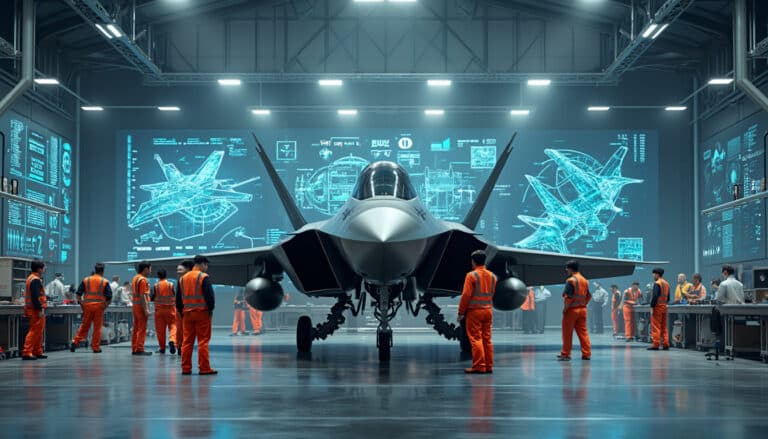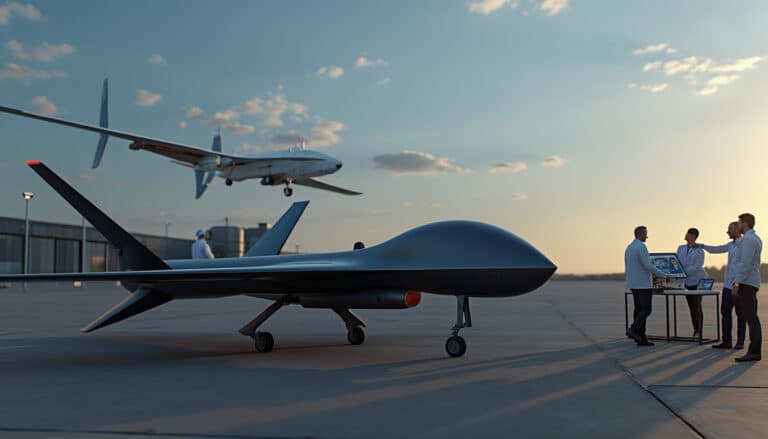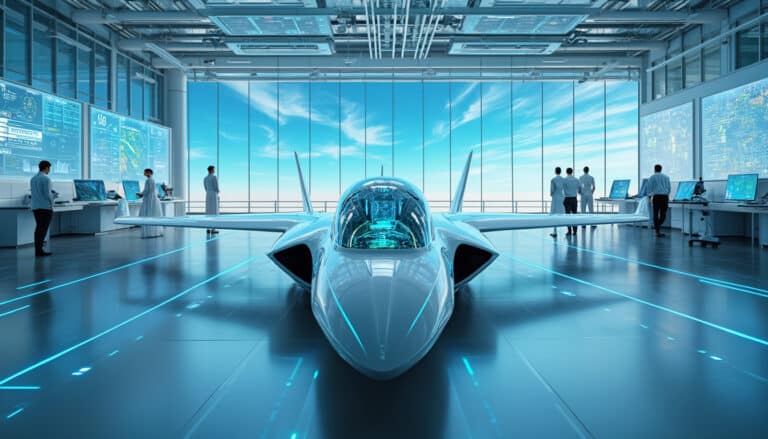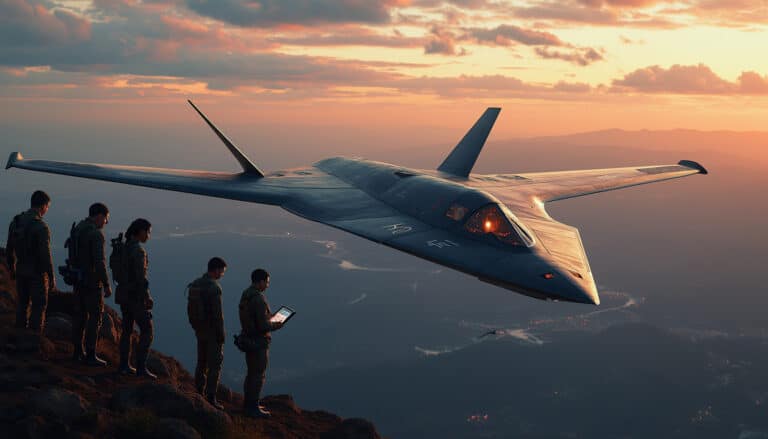Aviation, this fascinating sector in perpetual evolution, is at a crossroads where technological innovations and new passenger expectations are redefining standards. In 2023, the aeronautical trends paint a panorama rich in opportunities and challenges, revealing the resilience of an industry tested by crises. The data shows a significant catch-up of global air traffic, reaching 94% of pre-pandemic levels. This renewed interest in air transport is accompanied by the emergence of domestic routes and raises questions about the impact of business aviation services.
L’business aviation is also experiencing positive dynamics, marked by an 11.8% increase in flights, according to the EBAA. This revival demonstrates an increased desire by companies to turn to more flexible and rapid transport options. At the same time, trends in security and of technology are strengthening, emphasizing the need for optimal aircraft maintenance and more advanced pilot training. The aeronautics sector is thus embarking on a path of sustained innovation, while responding to the environmental and societal challenges which are now inextricably linked to it.
Table des matières
ToggleThe Top Aeronautical Trends of 2023: A Journey Towards the Future
In 2023, the aviation sector has seen significant developments that reflect both the resilience of the industry and the impact of recent challenges. With a gradual recovery and technological innovations, air traffic dynamics illustrate an impressive catch-up to pre-pandemic levels. Let’s analyze the main trends shaping the current aviation landscape and what it means for the future.
Technological and Ecological Innovation
One of the most notable trends of 2023 is the integration of sustainable technology in aeronautics. New generation aircraft are designed with lightweight materials, thus optimizing their energy efficiency. Advances in engines, such as those using biofuels, are now at the heart of the strategies of many airlines. This not only meets a regulatory requirement to reduce carbon emissions, but also a growing consumer demand for greener aviation.
Companies in the sector must be proactive in adopting these innovations. A key recommendation is to partner with technology startups and research centers to co-develop more ecological and sustainable solutions. Furthermore, airlines must consider investing in R&D programs to anticipate future trends in sustainable development and technological innovations.
Digital Revolution in Aviation
Digital transformation is accelerating in aeronautics. In 2023, industry players are leveraging advanced technologies such as artificial intelligence (AI) and big data analytics to optimize operations. The use of AI in flight planning and predictive maintenance is becoming more common every day. This can improve operational efficiency, reduce costs and increase flight safety.
For organizations, it is imperative to have robust systems in place for the integration of these technologies. Companies must train their teams to use data analytics to turn raw information into strategic decisions. Additionally, collaborating with technology companies to develop AI platforms designed specifically for their needs is highly advisable.
Reinvented Passenger Experience
The way passengers interact with aviation is rapidly changing. In 2023, the humanization of air travel becomes a priority. Airline brands are working to improve the user experience, with an emphasis on comfort, user-friendliness of online services and personalization of travel. Companies are starting to offer adapted services to the specific needs of customers, thus helping to build customer loyalty.
For maximum impact, businesses should consider using feedback methods, including surveys and real-time suggestions, to adjust their offerings. Additionally, exploring augmented reality (AR) technologies for in-flight entertainment and airport wayfinding could provide significant added value for passengers.
In this sense, companies must also develop intuitive mobile applications that facilitate booking, check-in and travel management. Investing in digital solutions not only increases customer satisfaction, but also operational efficiency.
Air Traffic Volume and Strategic Connections
2023 is marked by a strong recovery in air traffic volume, reaching 94.1% of pre-COVID levels. Domestic routes, in particular, are experiencing significant growth, demonstrating a trend towards regional trips and shorter circuits. This change in consumer behavior calls for airlines to review their routes and launch new routes to meet this demand.
Companies must adopt a dynamic approach to managing their network. Rigorous analysis of passenger traffic data and future demand patterns can help optimize supply. It is also wise to consider strategic partnerships with other transport players, such as land transport services, in order to run a seamlessly integrated multi-modal transport service.
Punctuality and Reliability of Flights
Punctuality has become an essential criterion for passengers in 2023. Airlines must raise their standards of flight reliability by improving the management of schedules and delays. By relying on advanced operations management systems, companies can minimize delays and increase customer satisfaction. Avianca, for example, has been recognized for its exceptional punctuality.
To achieve this goal, companies must invest in optimized technologies for flight tracking and proactive aircraft maintenance. Proper training for ground crew and aircrew is also crucial. Developing corporate cultures responsive to passenger needs and operational efficiency should be a priority to boost employee engagement.
Statistics from recent reports indicate that punctuality could become a major competitive factor in the years to come.
Continuing Training and Skills Development
With the rapid evolution of the industry, the continuing pilot training and maintenance personnel is more essential than ever. In 2023, the requirements to become a pilot are evolving, with increasing demand for advanced technological skills. Training must include modules on the use of automated flight management and predictive maintenance systems, in order to prepare professionals for future challenges.
Companies must invest in innovative and interactive training programs, including virtual reality to simulate real-world situations. Furthermore, the development of personalized development programs based on the continuous assessment of individual performance can greatly enrich skills and contribute to aviation safety.
Faced with increasing competition, upskilling should become an essential strategy for all companies seeking to remain relevant and effective in the global market.
Aviation Safety Challenges
Safety is a central concern for the aeronautical sector. In 2023, innovations in effectiveness of security measures and technological reporting on passenger tracking takes on even greater importance. Enterprises should explore advanced solutions to optimize threat detection while maintaining smooth onboarding processes.
New regulations require rapid adaptations. Airlines are advised to collaborate with experts in technological security to ensure that the security systems in place are state-of-the-art. Implementing artificial intelligence-based analytics systems for control and surveillance could transform airport security.
It is also crucial that companies invest in enhanced training for staff, enabling them to anticipate and manage emergency situations effectively, while reassuring passengers of their safety during travel.
The 2023 trends in the aviation sector illustrate dynamics focused on innovation, sustainability and customer experience, positioning the industry for solid growth in the years to come. To thrive in this new environment, businesses must adopt a proactive and collaborative approach, integrating best practices and technologies into their daily operations.
For more in-depth and strategic analyses, companies can visit the site Zabala Innovation or explore the details of analyzes of future trends and challenges.

. @ambodji1 : " Nous souhaitons aussi développer une cité aéroportuaire sur 1000ha. Comme vous le savez, aujourd’hui la tendance mondiale est de favoriser la création de villes autour des aéroports pour capter des ressources extra-aéronautiques. " 3/10 pic.twitter.com/YwfPWLEb9G
— AIBD SA (@AIBDsa) May 7, 2018
FAQ on the Top Aeronautical Trends of 2023
What are the main trends in business aviation in 2023? Business aviation has experienced a increase of 11.8% in the number of flights compared to 2021, marking a period of stabilization after significant challenges.
What is the status of global air traffic in 2023? In 2023, global traffic reached 94% of its 2019 level, with a return to normal expected by 2024.
How is the airline market doing? The ranking of best airlines in 2023 indicates that Singapore Airlines, Qatar Airways and Emirates continue to dominate the sector.
What is the most punctual airline in 2023? The company Colombian aviation Avianca stood out for its punctuality worldwide.
How has the aeronautical market evolved after the pandemic? TBC traffic recorded 71.6 million passengers in 2023, thus exceeding pre-crisis levels with an increase in 12% compared to 2019.
What are the impacts of Asian trends in the aeronautics sector? The year 2023 was marked by a rise in power of Asian markets at the level of air connections.
How does technological innovation influence aeronautics? Investments in technological defense and thesafety innovation are crucial to ensuring high standards in the sector.



